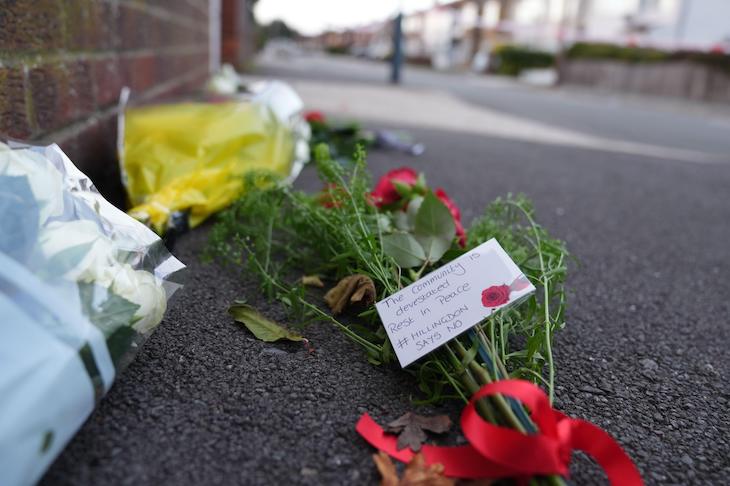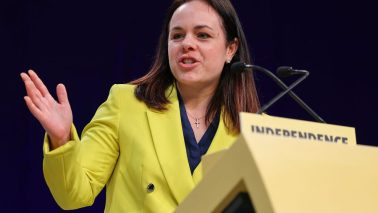I recently offered my services as a part-time RE teacher to my local comp, an inner-city affair with a Muslim majority. Yes please, said the nice headmistress: the Covid-blunted Year 11s needed all the help they could get with GCSE revision. The syllabus consisted of Christianity and Islam. What could go wrong?
The first thing that went wrong was that I talked about the Jewish roots of Christianity and Islam: Judaism was the original monotheism. ‘I don’t know if that’s right,’ said one girl, frowning. Well, you do now, I wanted to say. But of course what she meant was: I don’t know if you are to be trusted on this.
I consulted the textbook, for objective evidence. This is a book published by Pearson with the unlovely title: Revise Edexcel GCSE (9-1) Religious Studies B Christianity and Islam Revision Guide. I know: it sounds like it’s a supplementary revision guide. But it’s the only textbook that covers the course, so most cash-strapped schools tend to avoid buying supplementary books and use just this.
Oddly, there was no introductory section on the common parentage of both faiths. When we did move on to Islam, I was expecting the students to become more vocal, but the opposite happened. One question was on the Quran: how do Muslims treat it as a special book? Sullen silence. I suggested that the students draw on their experience. Does anyone have one at home? After some prodding, one boy said that it is kept in a special place, that nothing can be placed on top of it, and that if it is dropped it must be kissed twice. Someone else said their copy was used for family prayers, especially during Ramadan.
The next question on the worksheet was on Muhammad: list three things he did in his life. Someone volunteered that Muhammad taught people how to live a good life. Another boy remembered that he had been a shepherd before he was a prophet. Then: silence. This seeming ignorance was odd: these were pious youths.
So we consulted the textbook – obviously there would be a few pages on the Prophet. Er, no. Just a paragraph, in the section on prophets, and few scattered mentions elsewhere. There are 67 sub-sections in the Islam half, on things like ‘Wealth and poverty’ and ‘Issues in the natural world’. But nothing about the origin of this religion and the life of its founder. This also felt odd.
Of course any RE textbook is going to avoid controversy, but this one does so in a way that is almost comical
‘What else did Muhammad do?’ I asked. ‘He spread the faith,’ someone said. ‘Right,’ I said. ‘How did he do that?’ ‘Didn’t he fight some wars?’ Ah. Now I believed that the boy might have been correct about this, but I was anxious to have the support of the textbook before venturing into these deep waters. Maybe the information was in the ‘Peace and conflict’ section. There was a page on ‘Peace’, another on ‘Peacemaking’, another on ‘Pacifism’ (I’m not making this up, by the way). Then, at last, a page on ‘Holy war’. This might help us. It tells us that ‘Holy war, or Harb al-Maqadis, is only justifiable in cases where the intention is to defend the religion of Islam’. Anything on the origins of this tradition, though? Yes! Hurray: ‘Muhammad and his followers were involved in holy wars, such as the Battle of Badr and the Conquest of Makkah.’ A single sentence of actual information, within pages and pages of evasive guff.
The first half of the Christianity and Islam Revision Guide is on Christianity, the second half on Islam. The Christianity half starts with the Trinity, which is a fairly weird way to get going. Surely a quick narration of events in ancient Judea would be better, and a summary of the New Testament. A few pages on, to be fair, there is a section called ‘The last days of Jesus’s life’, with some bite-size excerpts from scripture. But there is no section on the life and teachings of Jesus – and there are 67 sections, on things like ‘Weapons of mass destruction’ and ‘Treatment of criminals’. It all seems designed to muddle and to discourage engagement with the core of this religion.
The Islam half starts even more confusingly. A section on ‘The six beliefs of Islam’ is followed by a section on ‘The five roots of Usul ad-Din in Shi’a Islam’. But there is no attempt to explain the origins of the Sunni-Shi’a split. Are the writers nervous of summarising such a controversial matter? Is this why there is no section on Muhammad?
The course is not a historical approach to the two religions, a defender might say. An online document explains that the course looks at each tradition ‘as a lived religion within the UK and throughout the world, and its beliefs and teachings on life, specifically within families, and with regard to matters of life and death’. But you can’t understand ‘beliefs in action’ unless you have a grounding in the origins and history of these beliefs.
Of course any RE textbook these days is going to avoid controversy, but this one does so in a way that is almost comical. It claims to address big topical issues, but actually teaches students how to talk harmless guff about them. In the Islam section on ‘Religious freedom’ we learn that ‘Muslims believe that having the freedom to be able to choose your religion is important’. In other humanities subjects, students are inducted into critical thought. In religion, it seems, they are shielded from it.
I have come away wondering if the teaching of RE is a good idea. If a subject cannot be taught with confidence that there is a body of knowledge worth imparting, it probably ought not to be taught at all. Better to leave religion to the priests and imams and parents, and to teach teenagers, all teenagers, very confidently about history, politics and British values.








Comments